Germany’s Secret Submachine Gun: The MP34
July 27th, 2021
6 minute read
Have you ever pondered the miraculous design of the human digits? They are, in general, stubby, crude sorts of things. Anyone who has ever tried to remove a splinter without the aid of tools can appreciate their innate limitations. Human fingers are the archetypal blunt instruments to be sure. However, slave these stubby rascals to the human brain, the most refined computer in the known universe, and you have capabilities most remarkable.
Your brain weighs three pounds and is mostly fat. It consumes one-fifth of your body’s total energy output and contains about 100 billion neurons. With the world as its playground, the human brain has contrived some of the most wondrous machines.
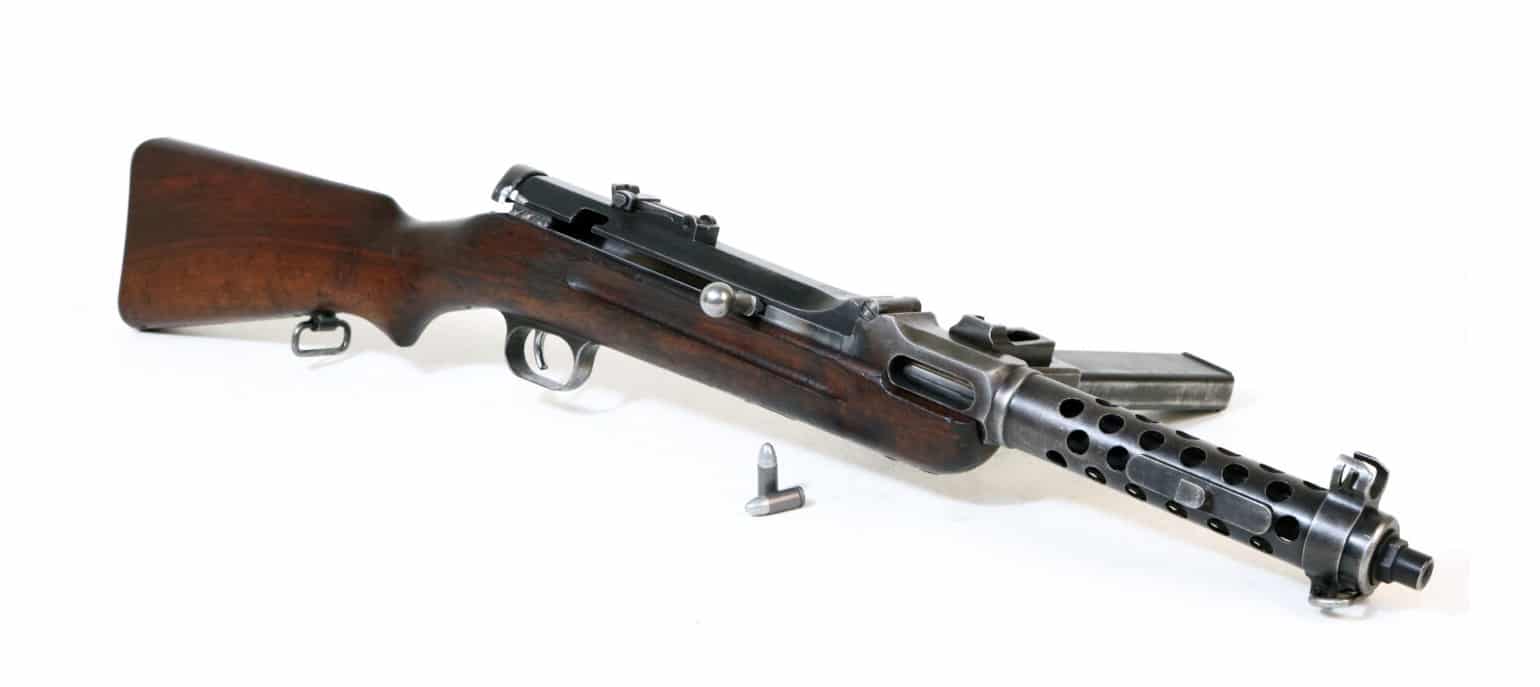
World War I was the species’ rude introduction to warfare on an industrial scale. This unprecedented hemoclysm brought us such rarefied stuff as poison gas, the combat submarine, tactical aircraft, and belt-fed machineguns aplenty. It also saw the introduction of the German MP18, the world’s first viable handheld man-portable submachinegun.
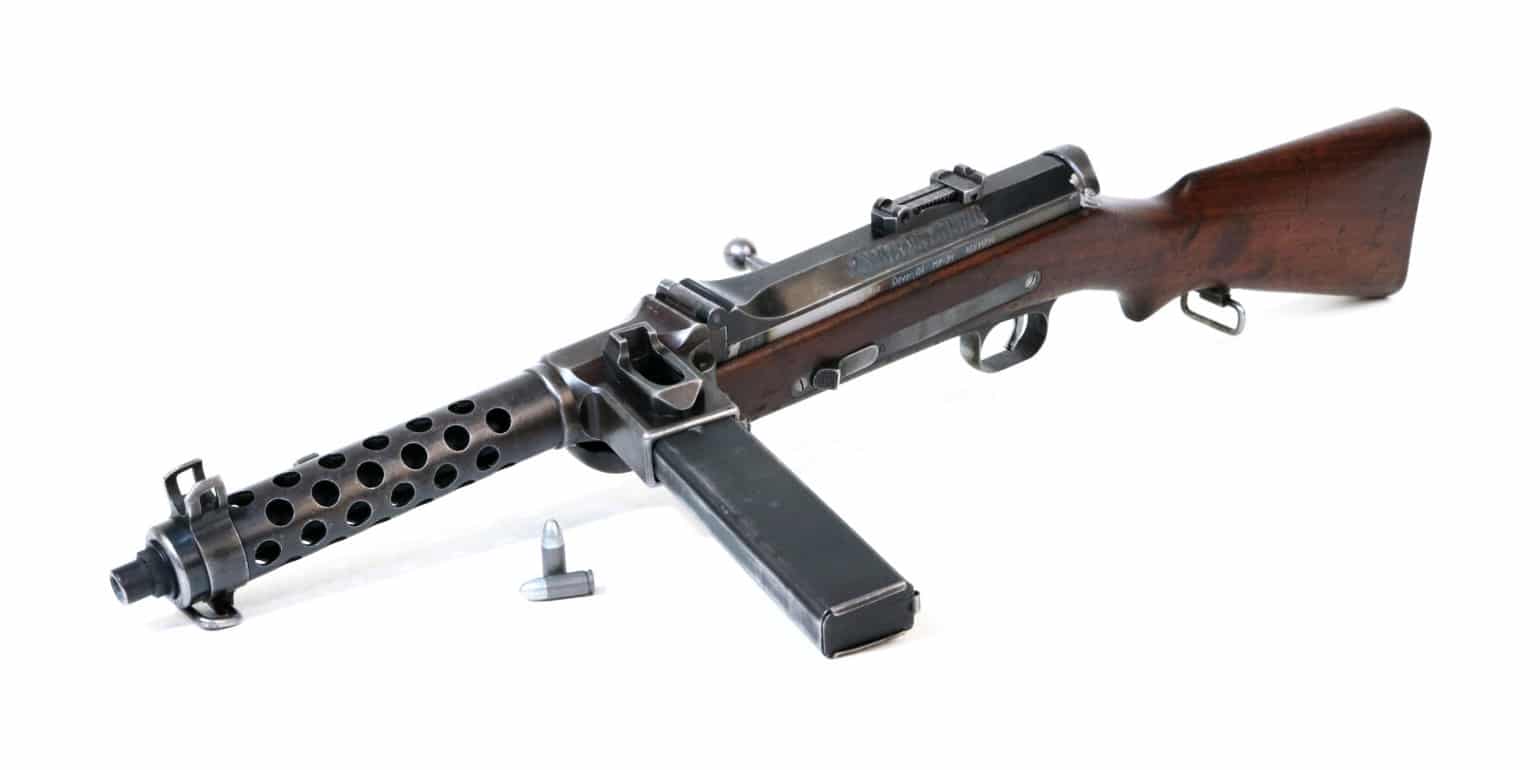
Sixteen million corpses later, the First World War ground to a bloody halt, but not before fundamentally altering the way men killed each other. Absorbing the tactical and strategic lessons learned, all the combatant nations went home to lick their wounds and plan for the next Great War. For the defeated Germans desperate to acquire the refined implements of modern combat, this required some creativity.
Convoluted Origins
The Treaty of Versailles that ended WWI restricted German pistol-caliber firearms to no more than eight rounds onboard and barrels of four inches or less, the specific vital statistics of the infantry version of the P08 Parabellum Luger pistol. As a result, the German weapons manufacturing behemoth Rheinmetall simply meandered over to Switzerland and purchased the Swiss Waffenfabrik Solothurn Company in 1929.
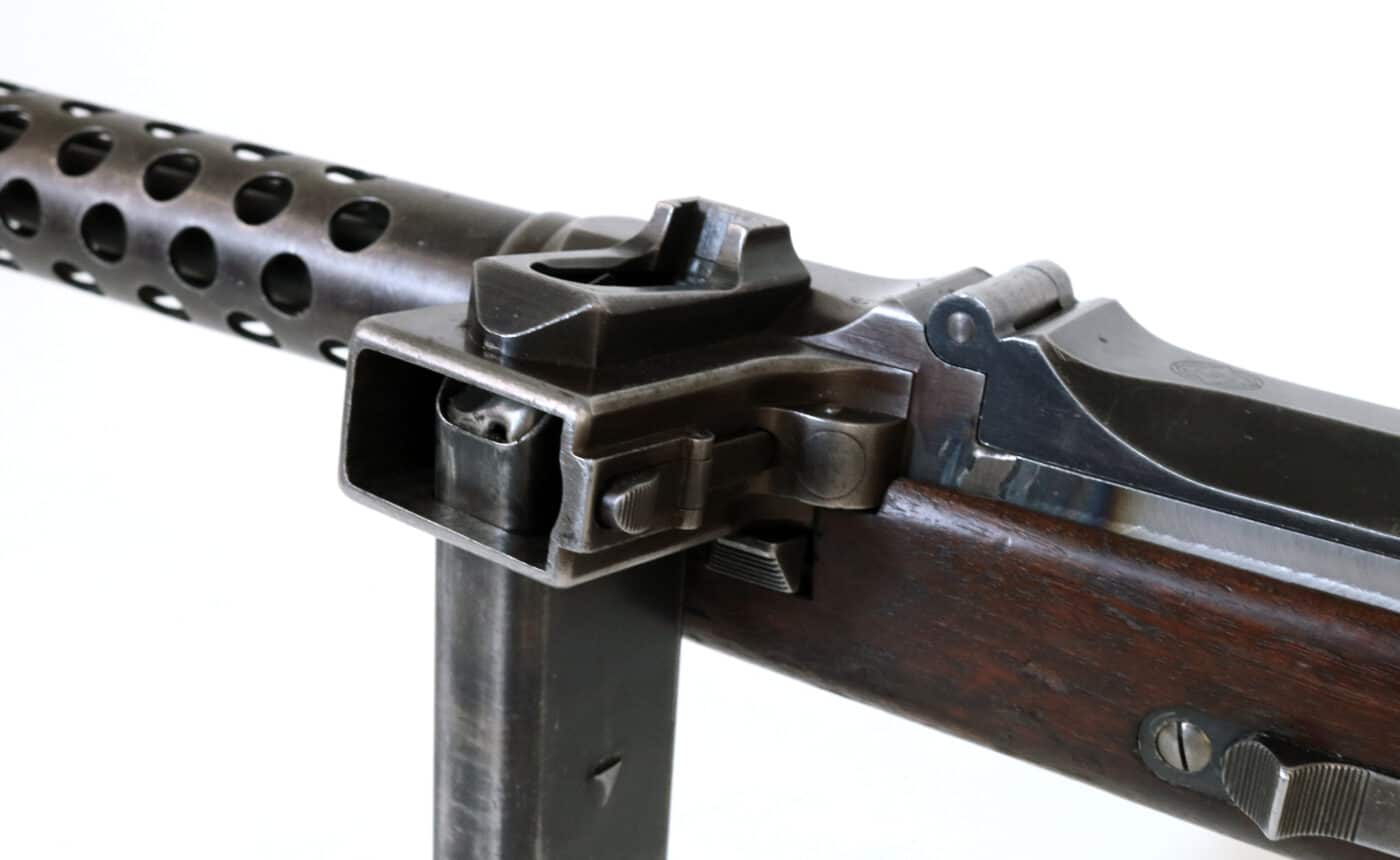
Working in secret, German and Swiss engineers produced the prototype S1-100 submachine gun. As Solothurn was a design outfit without an expansive production base, Rheinmetall then purchased a controlling interest in the Austrian Waffenfabrik Steyr company. The resulting Steyr-Solothurn Waffen AG conglomerate produced the redesignated MP34 for both military and commercial markets.
Technical Details
The MP34 is a blowback-operated open bolt selective-fire submachine gun that weighs 9.9 lbs. fully loaded. The gun was chambered for the 9x19mm Parabellum, 9x23mm Steyr, 9x25mm Mauser, 7.63x25mm, 7.65x21mm, and even .45 ACP cartridges. Most of the guns remaining today fire Georg Luger’s Parabellum round.
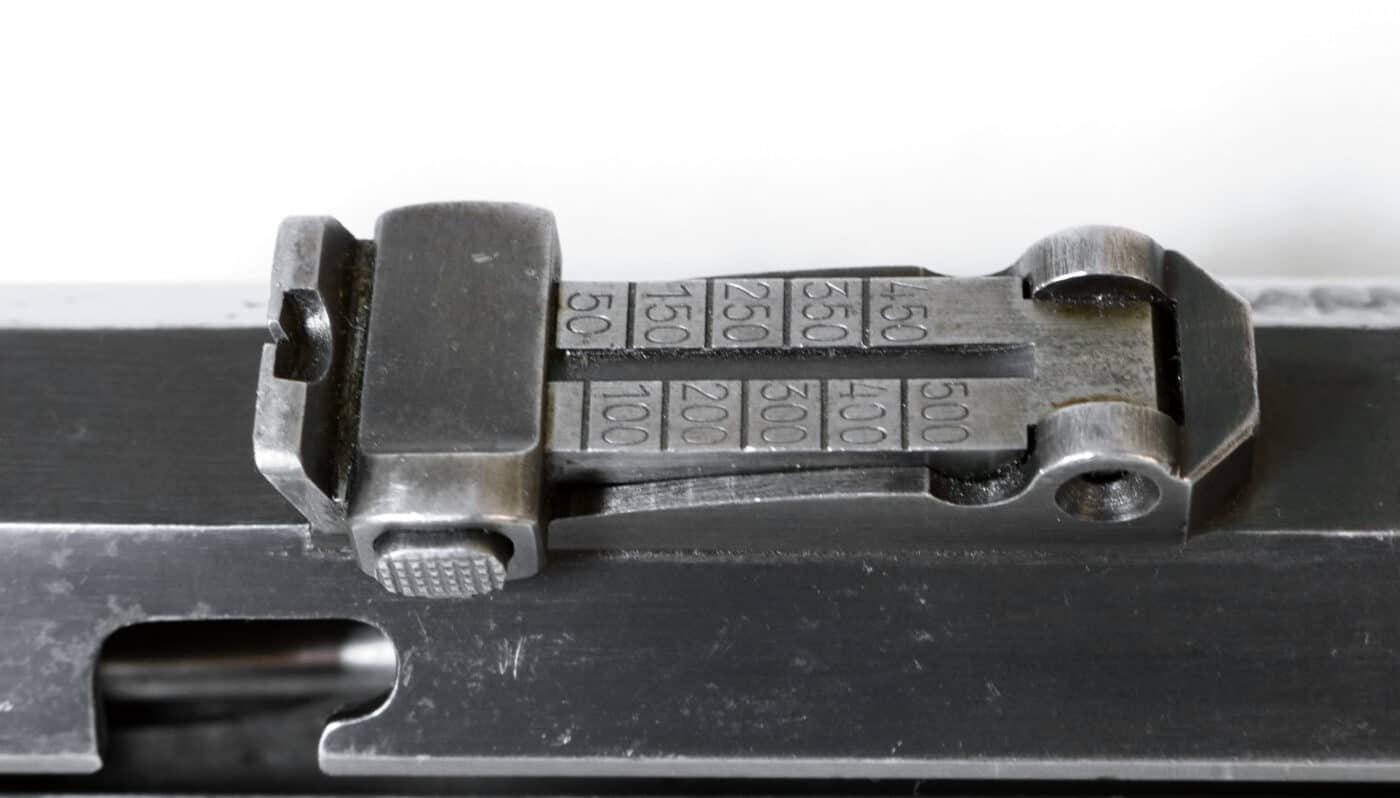
The MP34 fed from the left side via 20- or 32-round magazines canted slightly forward for optimal feed geometry. A sliding switch on the left aspect of the receiver selects between semi and fully automatic modes of operation. The heavy steel barrel shroud is an absolutely beautiful thing liberally perforated and sporting a bayonet lug.
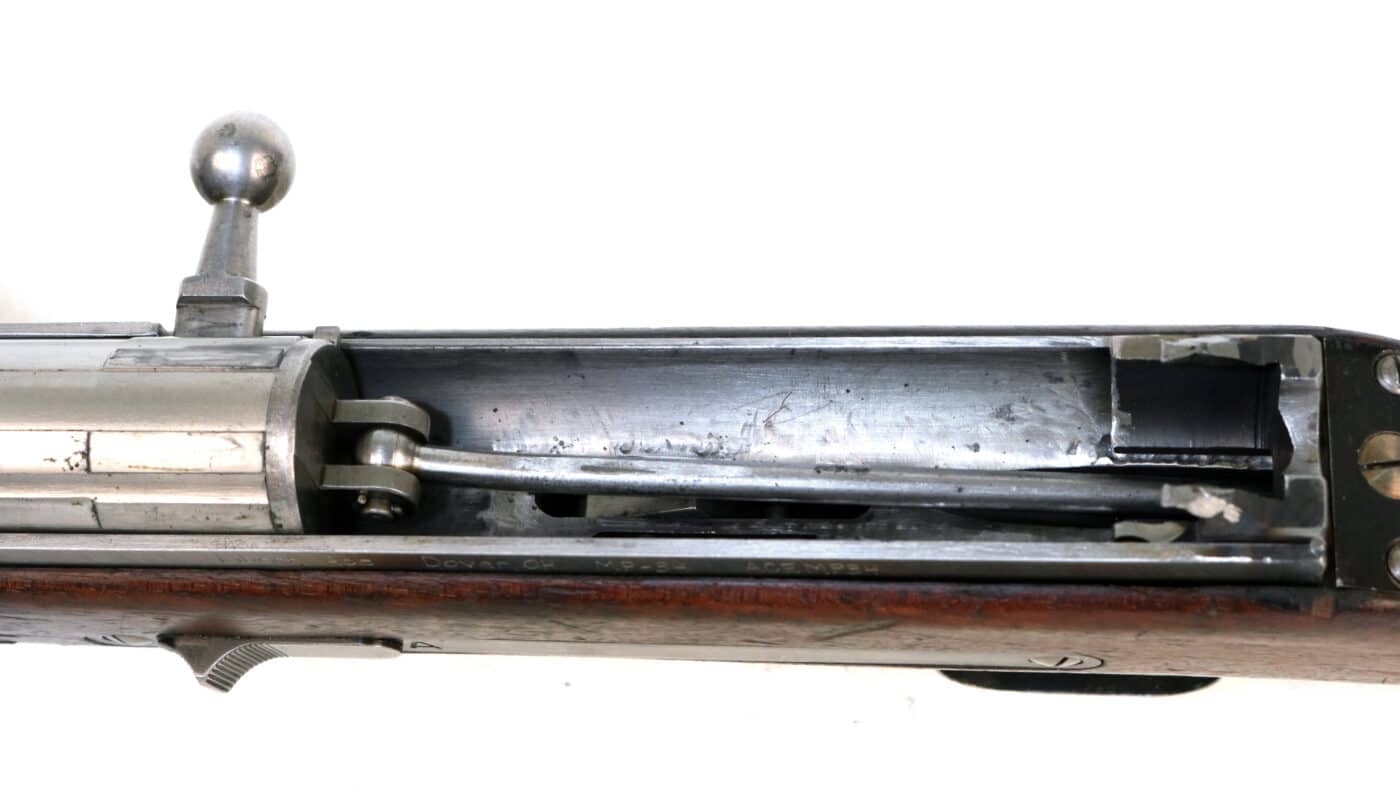
The magazine housing incorporated a curious device wherein an empty magazine could be locked in place from the bottom. Ammunition could then be quickly loaded via eight-round stripper clips charged from above. Absolutely everything about the gun is executed to a ludicrously refined standard of fit and finish.
The bolt of the MP34 sports an interesting rattail out its back that telescoped into a recoil spring assembly in the buttstock. A beautifully machined top cover pivoted upward in the manner of a belt-fed machinegun. All the gun’s major components to include the magazine well and buttplate were meticulously machined out of big chunks of forged steel.
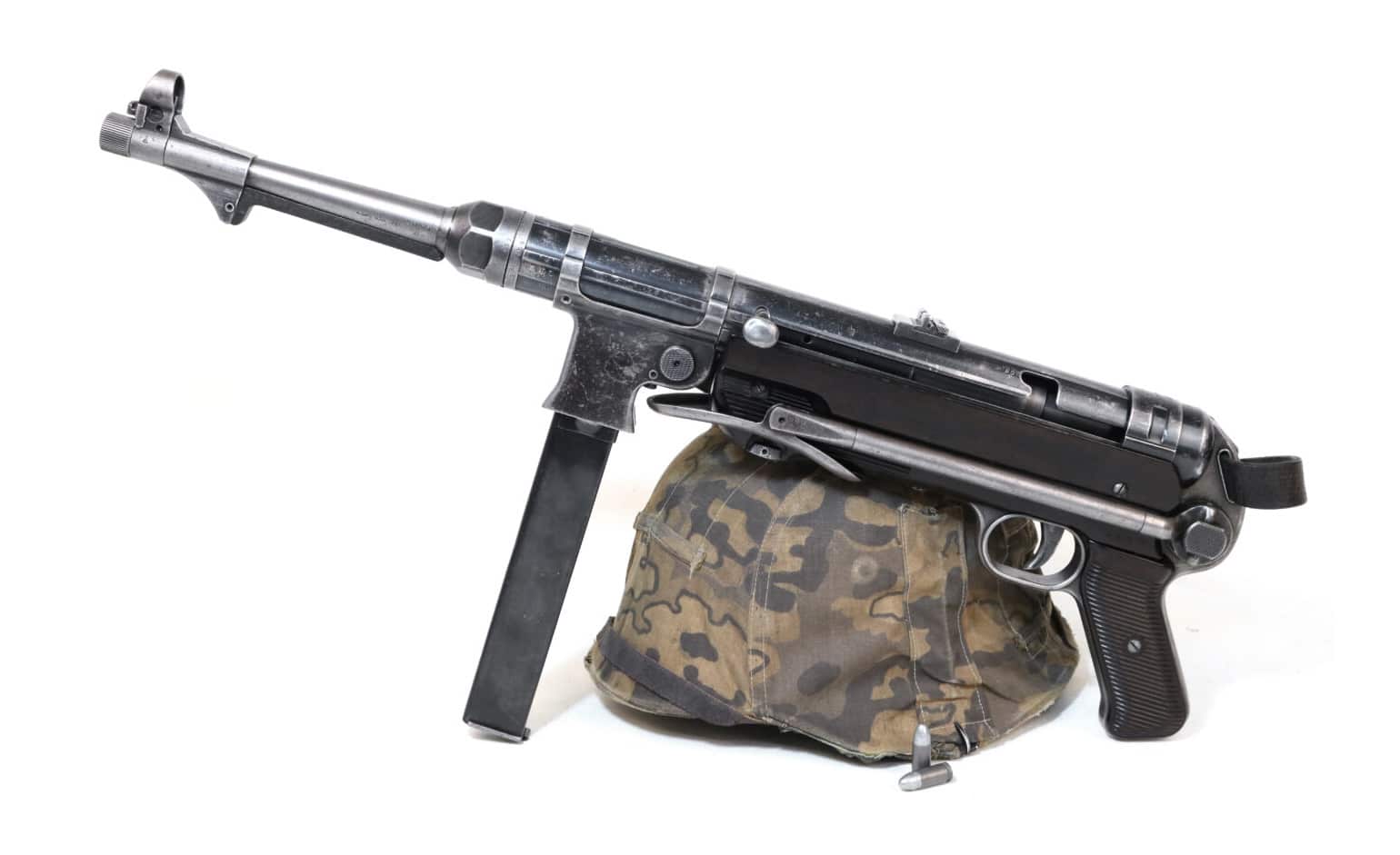
The rigid cocking handle reciprocates with the bolt. It can be locked into a safety slot in the manner of the later MP40 as needed. Certain of the production guns also had a secondary bolt lock-up around the magazine well that secured the bolt in either the forward or aft positions. The sights are well protected up front, and the rear sight is optimistically adjustable for elevation out to 500 meters. Turning the barrel out with a wrench facilitates easy caliber changes, a radical and mostly superfluous capability for its day.
Combat Use
The Germans never had enough weapons to go around. The MP34 saw limited service with the Wehrmacht in the opening phases of WWII. The advent of the MP38 and MP40 soon pushed the MP34 to second-line users like police and security forces. However, the Waffen SS used the gun fairly extensively throughout the war.
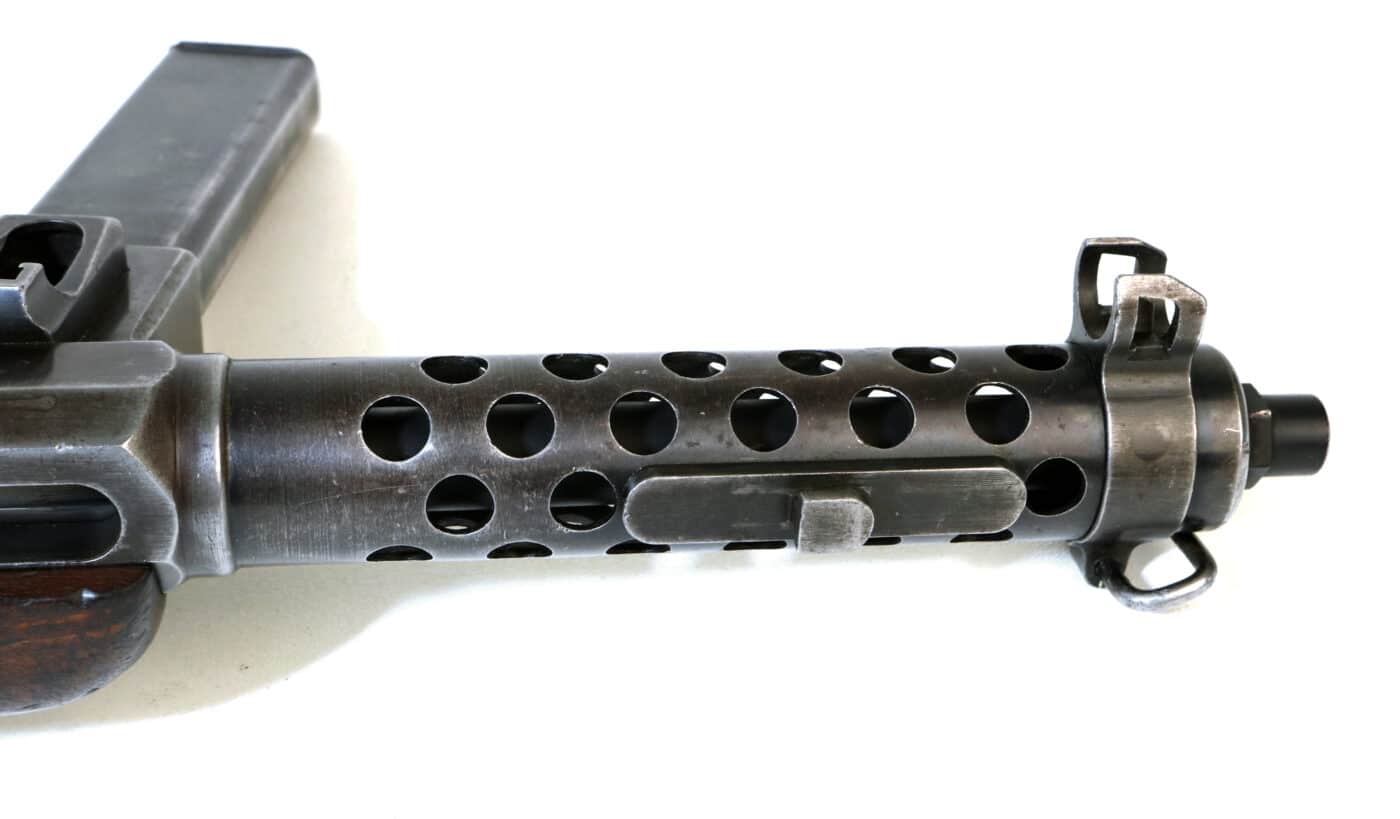
Literally “Armed SS,” the Waffen SS or Schutzstaffel began as an offshoot of Hitler’s personal bodyguard. The Waffen SS was forever finding itself scrambling for small arms. The traditional German Army resented these black-clad thugs and released resources to them, at least early on, with great reluctance. As a result, the SS remained the most prolific operational user of the MP34.
Trigger Time
The MP34 is excessively heavy by modern standards, but this makes the gun thoroughly controllable. The gun easily stays on target even in long bursts. Firing semi-auto, the weapon remains monotonously accurate out to the effective range of the 9mm Parabellum cartridge.
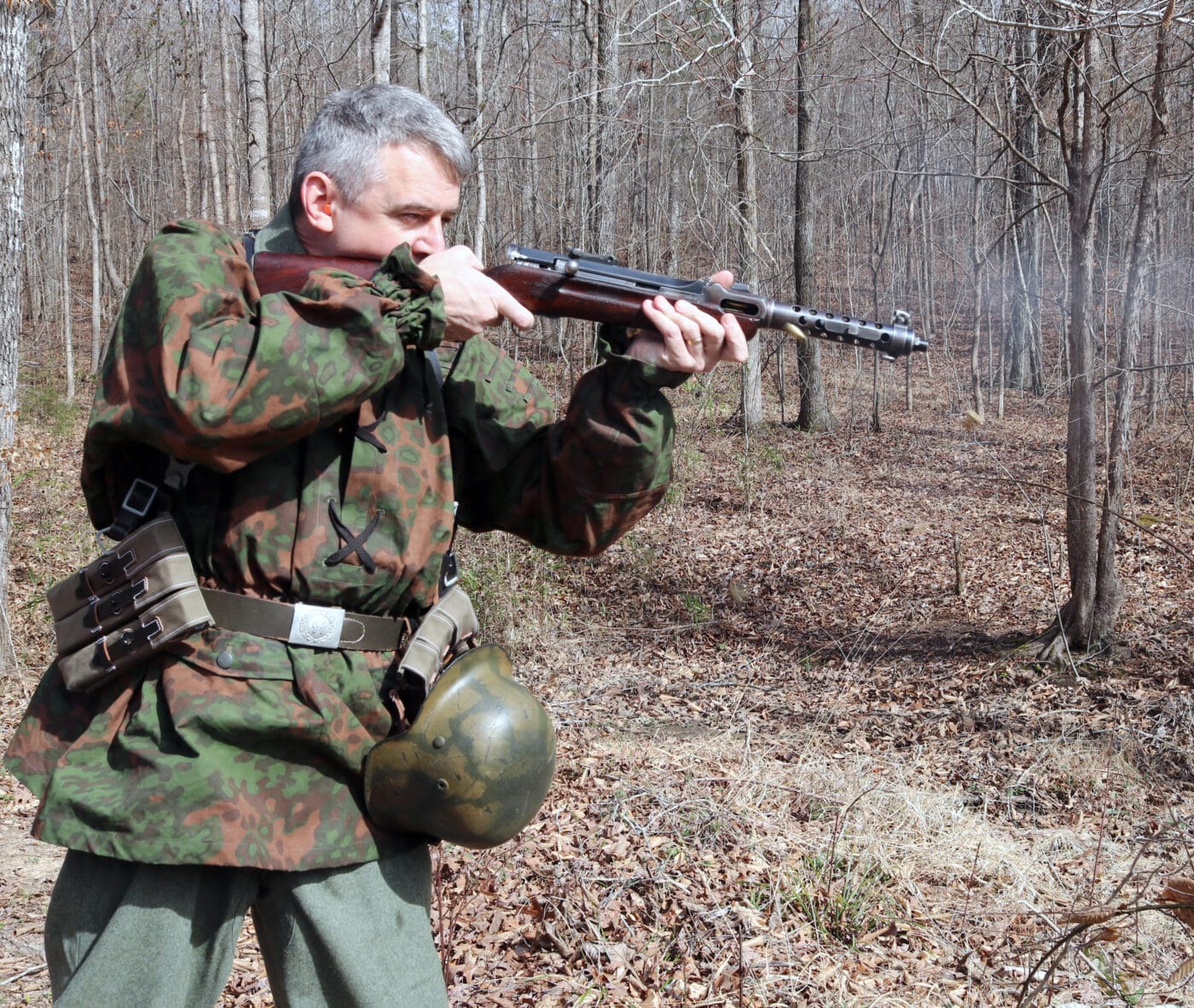
The gun’s sedate 600 rpm rate of fire is simply mesmerizing. Singles and doubles are easy with a disciplined trigger finger. The bolt must be manually locked to the rear with each magazine change.
Ruminations
Despite their many well-documented moral failings, the Germans during World War II did contrive some of the world’s most extraordinary weapons. The MP34 was never suitable for mass production, but it served as an evolutionary stepping stone to simpler, more effective stuff down the road. In many ways the MP34 was like the Thompson gun on our side of the pond. Expensive, heavy, and unnecessarily onerous to produce in bulk, it was nonetheless available when needed.
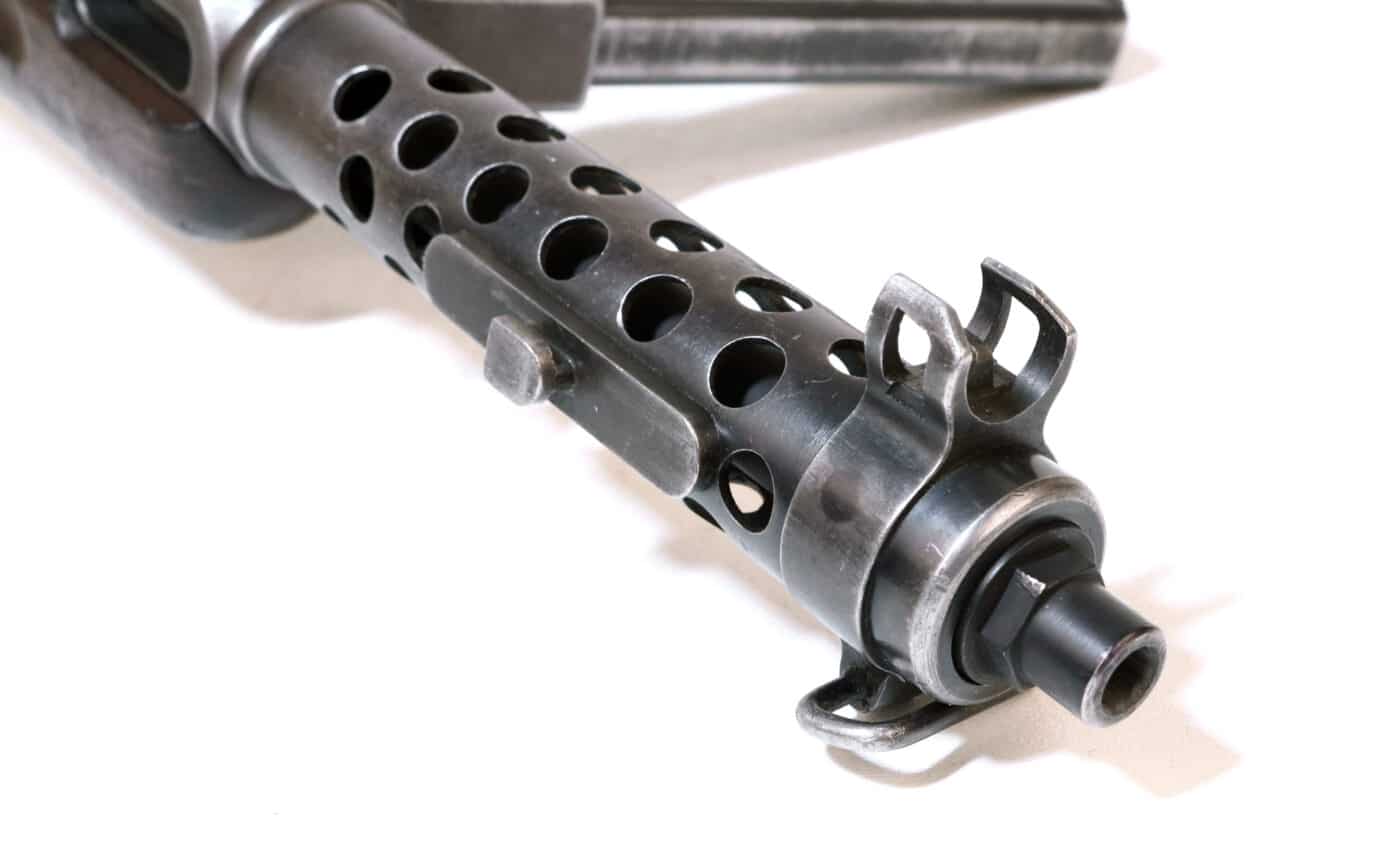
Sporting undeniably beautiful lines and unimpeachable workmanship, the MP34 design philosophy oft employed three parts when but one might otherwise suffice. Regardless, the MP34 was both gorgeous and effective as a World War II submachine gun. In the mitts of the most repugnant villains of the modern age this classic Steyr submachine gun represented art amidst chaos.
Special thanks to worldwarsupply.com for the period replica gear used in the production of this article.
Editor’s Note: Please be sure to check out The Armory Life Forum, where you can comment about our daily articles, as well as just talk guns and gear. Click the “Go To Forum Thread” link below to jump in and discuss this article and much more!
Join the Discussion
Continue Reading
Did you enjoy this article?

 237
237






